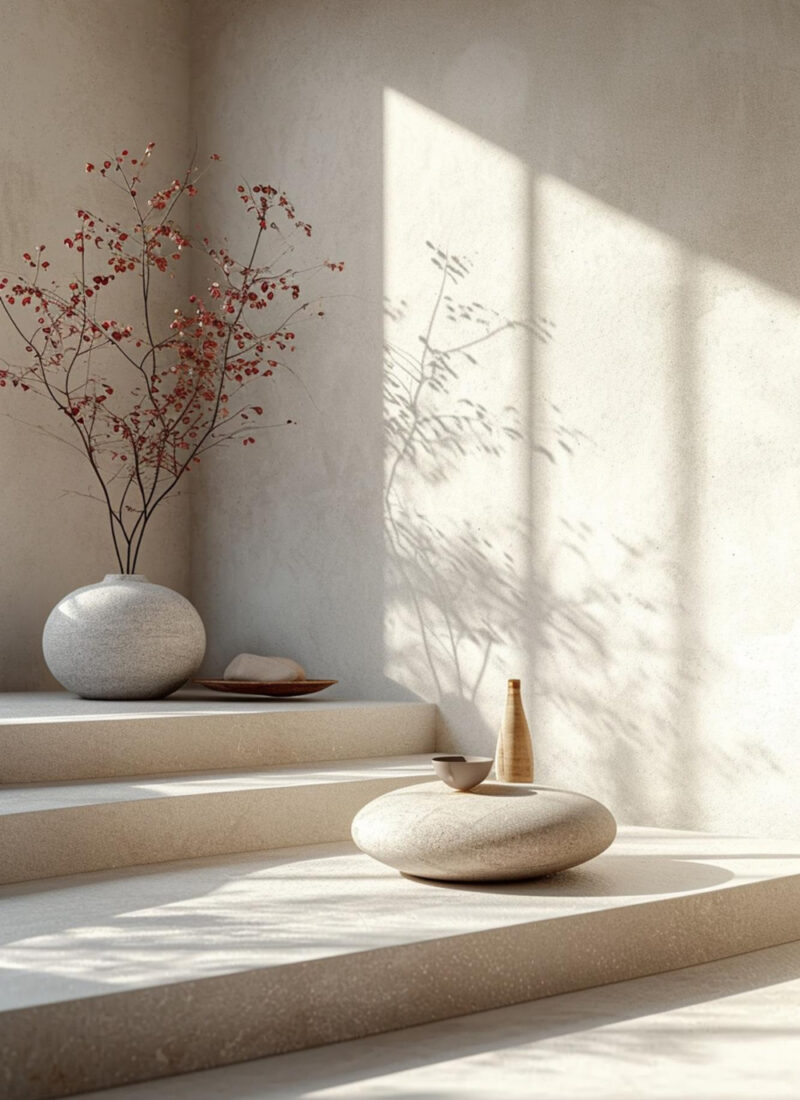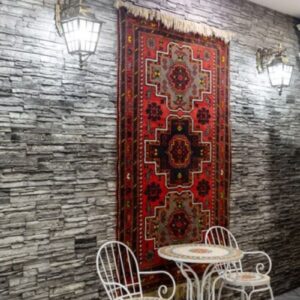The Arts and Craft movement is having a bit of a resurgence lately as a response to the uncontrollable fast pacing of life and too much use of digital technology. The renewed interest in this design aesthetics brings a new appreciation of natural materials and top-most craftsmanship.
However, there is little known information about this design trend. Luckily for you, you have come to the right place.
This article deals with understanding the Arts and Crafts interior design style. Also included in this article are the elements about what makes the Arts and Crafts interior design unique. You don’t need to look further if you plan to decorate your room in this design style because valuable tips have been included in this post.
What Is Arts and Craft Interior Design
The Arts and Craft movement was a response to the massive industrialization and the excesses of the Victorian Era with roots in the rustic style. The Arts and Crafts emerged during the end of the 19th century and the first decade of the 20th century. It was intended to follow the classic design style with emphasis on symmetry and harmony.
Photo by Collov Home Design on Unsplash
The ironic aspect of the Arts and Craft house interior is that it rejected the frivolity of the Victorian home yet still embraces ornamentation. The catch here is the embellishments of the furniture does not take centerstage. The ornamentation should only be viewed as complement to the functionality of the furniture. Same goes to the secondary design elements such the wallpaper and carpets. These don’t highlight what Arts and Crafts is all about; rather, simply just add more depth to the design.
The modern Arts and Crafts interior design style advocates the homey feel of home with an herb garden or a room filled with wooden design elements and oak flooring. There is an air of elegant simplicity in any room that’s designed in the Art and Craft style interior design.
What is the Arts and Crafts Movement?
The Arts and Crafts movement, which took root in the second half of the 19th century, emerged as a response to the industrialization of the modern world. Originating in Britain around the time of the Great Exhibition of 1851, it emphasized handcraftsmanship over mass-produced goods. Designers from this movement, such as William Morris, drew inspiration from medieval and natural motifs, fostering an aesthetic that championed quality materials, artisanal techniques, and the intrinsic beauty of hand-made items.
Photo by Aaron Huber on Unsplash
Who was William Morris?
One of the most influential figures of the Arts and Crafts movement was William Morris. As a designer, Morris’ wallpaper and textile designs often featured earthy palettes and ornate floral motifs. In 1861, along with a co-group of designers, he established a decorative arts company that aimed to integrate craft and design in furnishings and interiors. Morris’ commitment to craftsmanship extended to his family, including his daughter May Morris, who became a renowned textile designer in her own right.
Elements of Arts and Craft Interior Design
“Have nothing in your houses that you do not know to be useful or believe to be beautiful.”
If you really want to showcase your passion for craftsmanship, go by the tenets of the primer mover of the Arts and Crafts interior design. Here are the design elements that make up the Arts and Crafts style home decor.
High-Quality Materials
Arts and Crafts interior design follows the adage “Buy the highest quality money can buy.” This design style is not a enthusiast of fast manufacturing. This principle ensures that whatever design element you add are things you love and hold dear, and at the same time, would really help improve your life. The raw nature of the materials used are very much celebrated in this interior design style.
Synthetic dyes are frowned upon by modern Arts and Crafts house interior enthusiasts. One the other hand, natural dyes are more favored over the former as these have little harsh effects to the environment.
Straight Lines
Photo by Francesca Tosolini on Unsplash
Straight lines dominate the Arts and Crafts interior design style. These lines often form geometric patterns as seen in the window frames and staircase railings. But straight lines aren’t only relegated to larger dimensions. In fact, smaller accent pieces tend to be design with rectilinear lines as seen in the floor lamps. Additionally, geometric shapes are also more dominant motifs compared to flowers and fruit designs.
No Frills Principle
Simple forms are highly regarded and the construction of the design object is highlighted. Arts and Crafts movement believe that too much ornamentation is not a good thing- and any furniture that has too many embellishments are made poorly. That being said, design elements should be more functional that they are ornamental. The function would determine the design of a certain element. Take note that your design pieces doesn’t need to be hand-made. What’s important is it should be able to do what it is supposed to do.
Additionally, function comes first before form. That being said, you should avoid objects that have heavy ornamentation, especially those that have designs that interfere with its function.
Open Plans
The open-concept is not something new. In fact, the Arts and Crafts style embraced it when it emerged. The design movement rejected the Victorian style where each room is different from others. Instead, for the Arts and Crafts movement, there should be a seamless shift from the living to the dining to the kitchen and the rest of the home. There should be no distracting object between rooms.
Keep Only What’s Useful
Similar to what Marie Kondo encourages that only keep things that spark joy, this same goes same with the Arts and Crafts movement. Too much clutter can make you feel guilty and even drain your energy.
Traditional Production
There is great emphasis on the skills of the craftsman and his art as see in the Arts and Crafts style house interior. Wood carvings, embroidery and block printing are very much celebrated.
Photo by ArtHouse Studio
Fireplaces
A home can’t be defined as an Arts and Crafts style if there has no fireplace. The classic Arts and Crafts fireplace is often made of brick or stone. What sets this apart from other fireplace designs is that it has a copper hood. Also, you can often see scenic tiles set on the borders of the masonry. Sometimes, there is a motton engraved on the mantleshelf. Two tall bookshelves are set on each side of the fireplace.
Nature Is the Constant Theme
Whether it is used for decorative arts or entirely for interior design, nature has been a consistent source of inspiration for this kind of interior design movement. Most of the motifs are derived from countryside scenery that includes flowers, fruit, nests, birds and hedgegrows. The Arts and Crafts movement used nature as a theme differently from the of the Victorian style. The latter is more ornate. The Arts and Crafts interior design uses repeating floral motifs in a more linear and neat pattern. There is always balance in the design.
The embellishments are not overly done as that of the Victorian interior design. While still highly decorative, the designs must only be secondary to the function of the furniture or accent piece.
Traditional Arts and Crafts colors are also inspired by nature. The two most common shaded used in this design styles are moss green and eggplant but there are also other shades used. These include:
- Orange
- Vermillion Red
- Deep Green
- Golden Yellow
Arts and Craft Interior Design Tips
One design style that shares many traits with the Arts and Crafts interior design style is the Art Nouveau. Both use nature as its primary inspiration. Here are some ways that you can design the Arts and Crafts style without stepping too much towards the Art Nouveau movement.
Always take inspiration from nature. Nature is a great source of inspiration for the Arts and Crafts movement interior design. Stylized outtakes of what can be seen in nature is often added in the design mix. Take inspiration from Japanese, Arabic and Medieval art.
Choose hand-fininshed furniture to add to your design. Pick the ones that demonstrate the craftsmanship put into the pieces- and that includes the design and techniques utilized in creaitng the furniture.
If your budget allows it, commission an artisan to create a one-of-a-kind piece as part of your art and craft interior design style.
Pick sustainable materials to add to your design. There is much emphasis on anticonsumerism as part of the principles of the Arts and Crafts interior design movement. That being said, naturally and sustainably sourced pieces are more preferred than adding design pieces made of synthetic materials.
Photo by Curtis Adams
If you can source your design pieces from a local artisan, the better. Mass-produced pieces are not encouraged; unique design pieces that showcase the true craftsmanship of the designer is celebrated. That is why buying from a local artisan is more preferred as the latter shows more originalty and provides more novelty than having run-of-the-mill accent pieces.
Remove colonnades dividers and bookcases that might disrupt the movement of people from room to the other.
Encourage the use of locally-sourced materials, especially wood. Your furniture should have little wax or stain. It would be better if you leave it unstained to highlight the natural grains of the wood.
Add built-in sideboards, cabinets, bench seats and bookcases. These pieces become part of the wall which eliminates the need to clean their legs which can hide dust.
Include furnishings such as ceramic dinnerware, vases and tiles, preferably in green. This complements the oak wood furniture which is a staple of this design. Also, include Navajo rugs and Native American baskets made of grass.
What Makes Arts and Crafts Interior Unique?
Distinguishing features of Arts and Crafts interior design include the use of traditional craftsmanship techniques, the influence of nature in its motifs, and the focus on quality over quantity. The interiors often showcase woodwork, stained glass, and handcrafted tiles. The color palette of Arts and Crafts homes are typically earthy tones, with a nod to the natural world.
Craftsmanship and The Designer’s Touch
Craftsmanship is the heart of the Arts and Crafts aesthetic. From hand-made pottery to silverware, the emphasis was always on the handcraft, with designers and craftspeople dedicating hours to perfecting their pieces. The movement saw the designer not just as an architect or theorist but as an artisan and craftsman.
Influence of Wallpaper and Textiles
Wallpaper played an essential role in the Arts and Crafts interior, with designers like Morris creating intricate designs that became a focal point in many homes. Textiles, too, were significant, from embroidered tapestries to decorative curtains, reflecting the movement’s commitment to quality and craftsmanship.
To End
The Arts and Crafts interior design takes a lot of emphasis on the detail and craftsmanship of the design pieces. Here are some key takeaways from the article;
- The Arts and Crafts movement began in the 19th century as a reaction against industrialization.
- Central figures like William Morris championed craftsmanship and drew inspiration from medieval and natural motifs.
- Functionality and beauty are at the core of Arts and Crafts interior design principles.
- Wallpaper and textiles play a crucial role in the Arts and Crafts aesthetic.
- Today, the Arts and Crafts influence is visible in many modern homes, showing the timeless appeal of this design trend.
Is this your preferred interior design style? Share with us your thoughts on this in the comments section.




